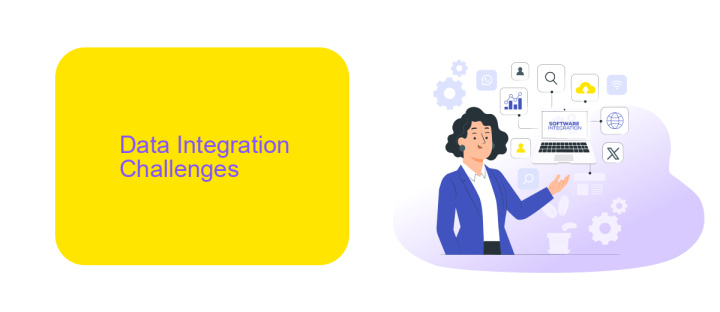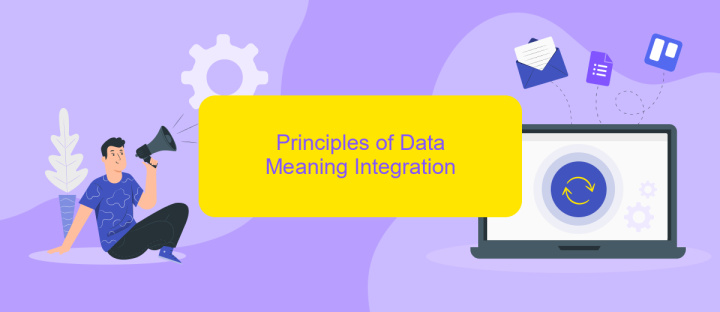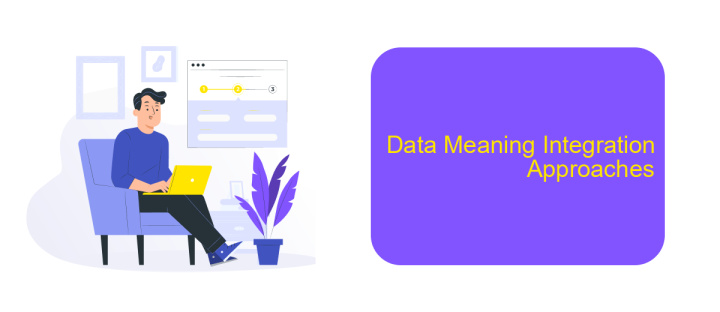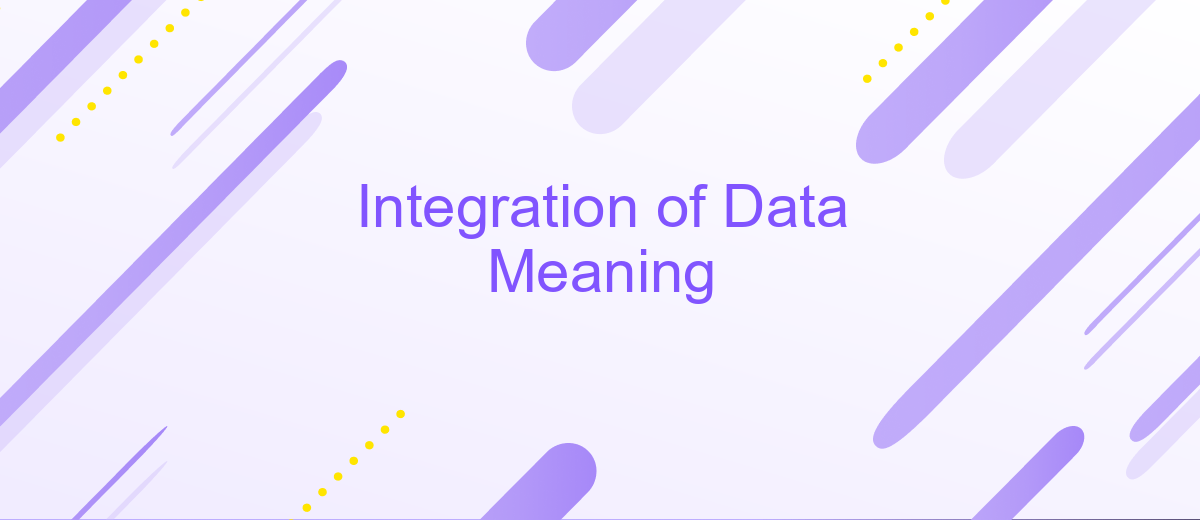Integration of Data Meaning
In today's data-driven world, the integration of data meaning has become crucial for organizations aiming to harness the full potential of their information assets. By unifying disparate data sources and ensuring consistent interpretation, businesses can unlock deeper insights, improve decision-making, and drive innovation. This article explores the significance of data meaning integration and its impact on achieving a cohesive and comprehensive understanding of data.
Meaningful Data Integration
Meaningful data integration is crucial for organizations aiming to leverage their data effectively. By ensuring that data from various sources is harmonized and consistent, businesses can make more informed decisions and drive better outcomes. This process involves not just the technical integration of data but also the alignment of data semantics to ensure that the information is truly useful.
- Data harmonization: Ensuring consistency across different data sources.
- Semantic alignment: Matching data meanings to avoid misinterpretations.
- Automated integration: Using tools like ApiX-Drive to streamline the process.
ApiX-Drive is an exemplary tool that simplifies the data integration process by automating the synchronization of data from various platforms. It helps in maintaining data consistency and ensures that the integrated data is meaningful and actionable. By leveraging such tools, organizations can focus more on analyzing the data rather than spending time on manual integration tasks, ultimately leading to more strategic insights and better decision-making.
Data Integration Challenges

Data integration presents several challenges that organizations must navigate to achieve seamless data flow across various systems. One of the primary challenges is data inconsistency, where data from different sources may have varying formats, structures, or definitions, making it difficult to achieve a unified view. Additionally, data quality issues such as duplicates, inaccuracies, and missing values can hinder the integration process, leading to unreliable insights and decision-making.
Another significant challenge is the complexity of integrating legacy systems with modern applications. Many organizations rely on outdated systems that are not designed to communicate with newer technologies, requiring extensive customization and middleware solutions. Services like ApiX-Drive can help mitigate these issues by offering automated data transfer and synchronization between disparate systems, reducing the need for manual intervention. Furthermore, ensuring data security and compliance with regulations such as GDPR adds another layer of complexity, necessitating robust encryption and access control measures throughout the integration process.
Principles of Data Meaning Integration

Integrating data meaning involves aligning and harmonizing data from various sources to ensure consistency and clarity. This process is crucial for organizations looking to make data-driven decisions and derive actionable insights. Effective data meaning integration requires a clear framework and adherence to key principles.
- Standardization: Establish consistent data definitions and formats across all data sources to avoid discrepancies.
- Data Quality: Ensure the accuracy, completeness, and reliability of data before integration.
- Metadata Management: Maintain comprehensive metadata to provide context and facilitate understanding of the integrated data.
- Scalability: Design the integration process to handle increasing volumes of data without compromising performance.
- Automation: Utilize tools like ApiX-Drive to automate data integration tasks, reducing manual effort and minimizing errors.
By adhering to these principles, organizations can achieve seamless data meaning integration, leading to more informed decision-making and improved operational efficiency. Tools like ApiX-Drive play a vital role in streamlining the integration process, ensuring that data from various sources is harmonized and ready for analysis.
Data Meaning Integration Approaches

Data meaning integration is essential for ensuring that disparate data sources can communicate effectively and provide a unified view of information. One common approach is semantic integration, which involves aligning the meanings of data elements from different sources. This can be achieved through the use of ontologies and data mapping techniques that help standardize the interpretation of data.
Another approach is the use of middleware solutions that facilitate the translation and transformation of data between systems. These solutions often include tools for data cleansing, normalization, and enrichment, which help maintain data quality and consistency. Additionally, cloud-based integration platforms, such as ApiX-Drive, offer user-friendly interfaces and automation capabilities to streamline the integration process.
- Semantic Integration: Aligns data meanings using ontologies.
- Middleware Solutions: Translates and transforms data between systems.
- Cloud-Based Platforms: Automates and simplifies integration tasks.
These approaches can be combined to create a robust data integration strategy that ensures data from various sources is consistent, accurate, and meaningful. By leveraging tools like ApiX-Drive, organizations can reduce the complexity of data integration and improve the efficiency of their data management processes.
Benefits of Data Meaning Integration
Integrating data meaning across various systems and platforms offers numerous benefits that can significantly enhance business operations. One of the primary advantages is improved data consistency. When data is consistently interpreted and utilized across different departments, it ensures that everyone is on the same page, reducing misunderstandings and errors. This uniformity in data interpretation can lead to more accurate decision-making, as all stakeholders have access to the same, reliable information.
Another significant benefit is the increased efficiency in data management. Tools like ApiX-Drive simplify the process of integrating data meaning by automating data transfers between different applications. This not only saves time but also minimizes the risk of human error. Additionally, with seamless data integration, businesses can easily scale their operations, as the need for manual data entry and reconciliation is drastically reduced. Ultimately, integrating data meaning streamlines workflows, enhances data accuracy, and boosts overall productivity.
FAQ
What is Data Integration?
Why is Data Integration important?
What are the common challenges in Data Integration?
How can automation help in Data Integration?
What should I consider when choosing a Data Integration tool?
Apix-Drive will help optimize business processes, save you from a lot of routine tasks and unnecessary costs for automation, attracting additional specialists. Try setting up a free test connection with ApiX-Drive and see for yourself. Now you have to think about where to invest the freed time and money!

